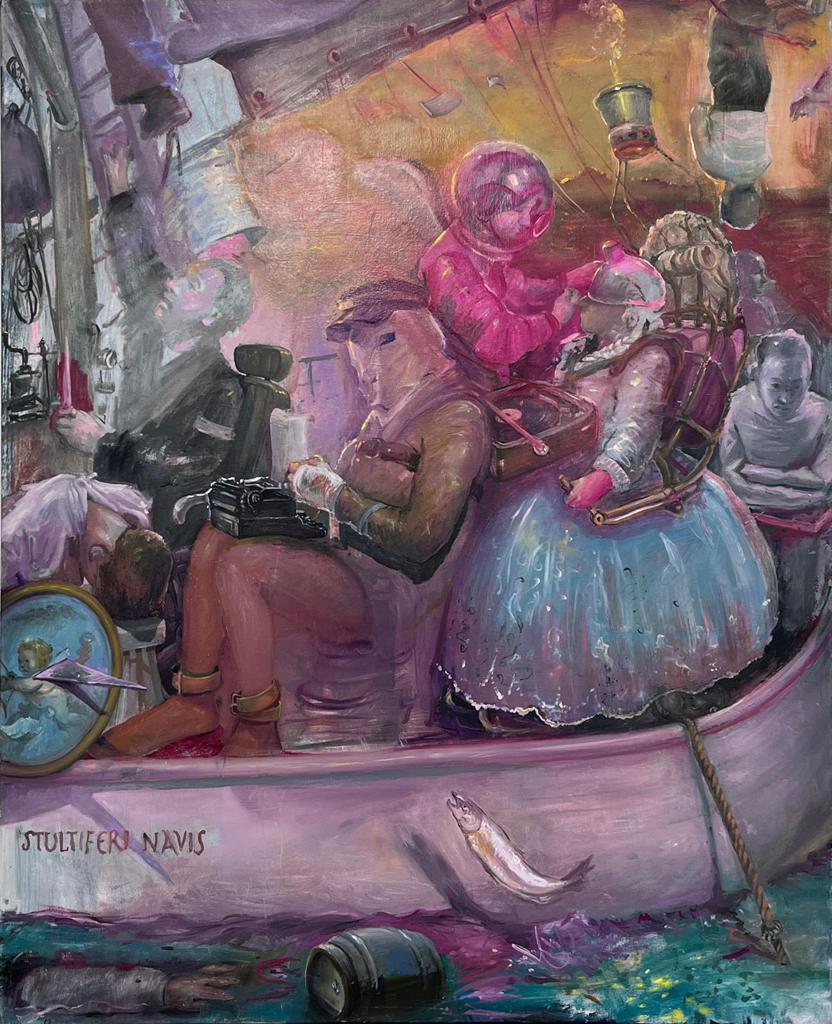Once again, Atilio Pernisco confronts us with ourselves. But this time, his characters, shipwrecked on the brink of impending disaster, experience death as a revelation. In the mesmerized contortions of their gestures, both suffering and pleasure, fall and transcendence present themselves as aspects of one and the same monstruous epiphany.

This duality in Pernisco’s universe is also visually supported by a personal language that combines classic figurative rendering, of an almost photographic persuasion, with a purely gestural impulse, bordering on abstraction. And just as it happens with the work of Jenny Saville, Glenn Brown or Mark Tansey, in Pernisco too, any glimpse of a narrative line breaks down into the materiality of the work itself: the impetuous brushstroke, the blur, the stain, the dripping light, the unexpected dissonances…
Thus, everything points, in this new avatar of Pernisco’s work, to a vision committed to its own dystopian nature. A vision aware that the end of the world as a theme has ceased to be the privilege of our fictions in order to become our collective reality. Our nuclear wars and planetary infernos, our genocides and global outbreaks transcend all biblical proportions, for they no longer respond to the fantasies of an abstract god but to the self-fulfilling prophecies of our cataclysmic ambitions.
It is from this perspective that Pernisco redefines the medieval tradition of The Ship of Fools.

It is no longer the jester, the drunkards, the rapscallion, the thief, or the religious frauds of Hieronymus Bosch who sail towards the promised land of the insane. In Pernisco’s ships (a dinghy, a small plane, a boat, an ark, or drifting pieces of board) now travel the lawyer, the art critic, the businessman, the hairdresser, the documentary director, the catwalk model, the astronaut, or the stock investor.
In these post-real, trans-fictional adaptations of our shipwreck mythologies, we all are the dysfunctional crew. Our perplexity, our grotesque laugh, our muted cry, represent the spectrum of possible answers to a single disturbing question: What happens when the end of the world ceases to be a secret aspiration and becomes our posthumous, hallow accomplishment?
* The exhibition Transfixions is on view at Artbug Gallery in Los Angeles from October 29 through January 2023.











